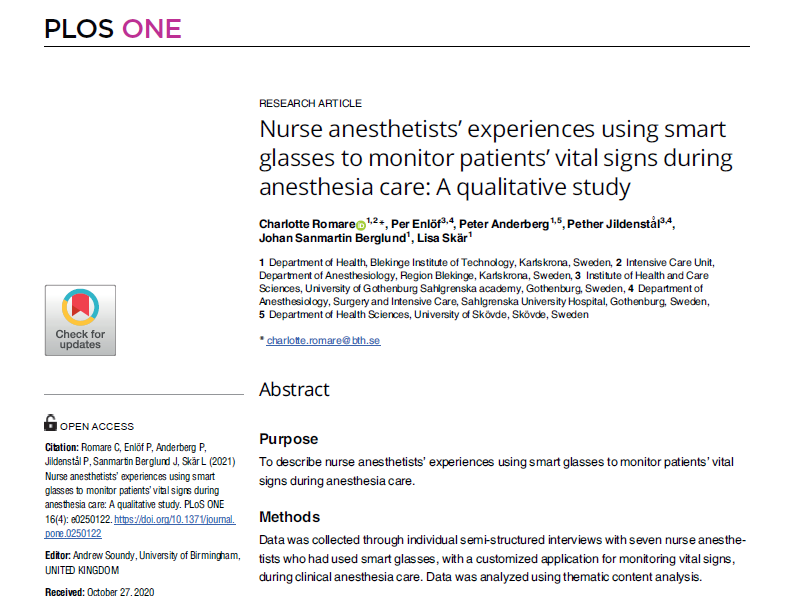- Home/
- Publications/
- Nurse anesthetists’ experiences using smart glasses to monitor patients’ vital signs during anesthesia care: A qualitative study

Nurse anesthetists’ experiences using smart glasses to monitor patients’ vital signs during anesthesia care: A qualitative study
- Post by: charlotteromare
- 21 April, 2021
- No Comment
Read on DOI
Tagged: anesthesia, Charlotte Romare, Johan Sanmartin Berglund, Lisa Skär, Monitoring physiologic, nursing, Per Enlöf, Peter Anderberg, Pether Jildenstål, Qualitative research, smart glasses

